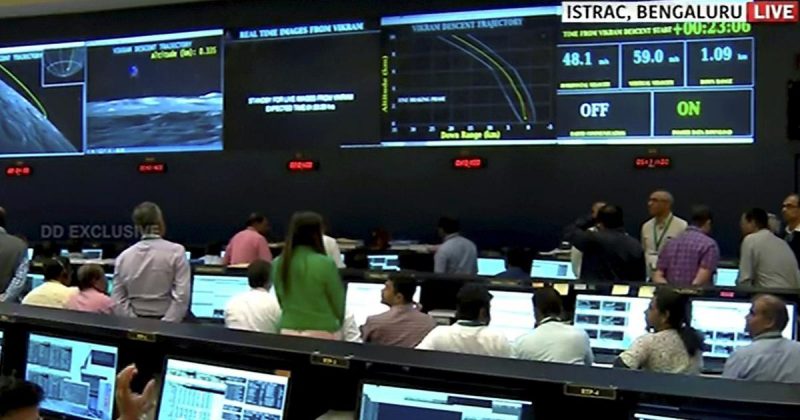
Centre Reveals That Chandrayaan 2’s Vikram Hard-Landed Within 500 Meters Of Target
Putting more light on Chandrayaan 2‘s hard landing on the farther side of the moon, the centre on Wednesday has revealed what caused Vikram Lander to loss connection minutes before the landing.
Vikram lander hard-landed as reduction in velocity during its descent was more than the designed parameters, the government said.
In a written reply to a question raised in the Lok Sabha, Jitendra Singh, who foresee the department of space, said the first phase of descent was performed nominally from an altitude of 30-km to 7.4-km above the moon’s surface and velocity was reduced from 1,683 metres per second to 146 metres per second.
Also Read: Do You Remember When Was The First Day-Night Test Played? Or Why It Uses Pink Ball?
“During the second phase of descent, the reduction in velocity was more than the designed value. Due to this deviation, the initial conditions at the start of the fine braking phase were beyond the designed parameters. As a result, Vikram hard-landed within 500 metres of the designated landing site,” he said.

The letter further added that other technical concepts including the launch, orbital critical maneuvers, lander separation, de-boost and rough braking phase were successfully accomplished.
Chandrayaan 2, the indigenously developed spacecraft was successfully launched on July 2, 2019, from the Satish Dhawan Space Center in Sriharikota. The spacecraft comprised of an orbiter, lander and rover. Post successfully dislodging the orbiter into the moon’s orbit, Vikram lander separated from the Orbiter on September 2, 2019.
Also Read: Here’s How A 27-Year-Old Got His Dream Job With Ratan Tata
However, minutes before the secluded landing, lander Vikram, which was carrying a rover was lost the connection with the ground station on Earth.



